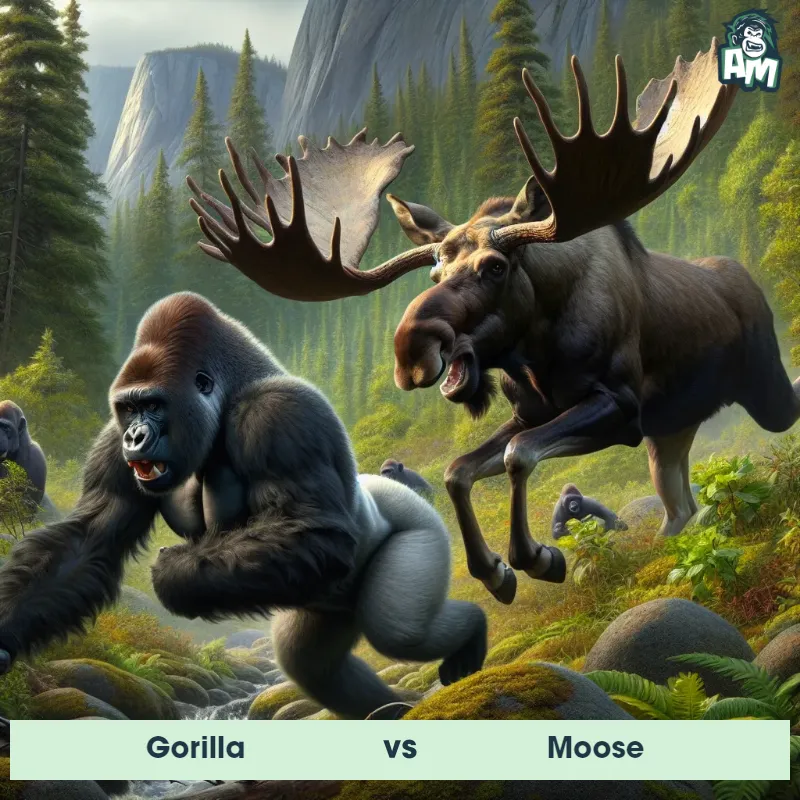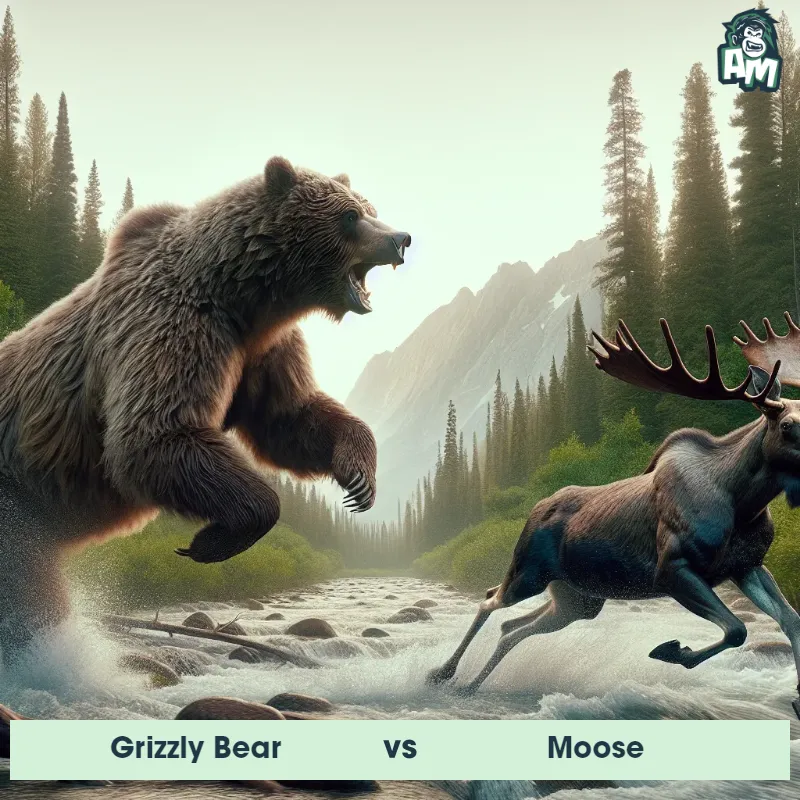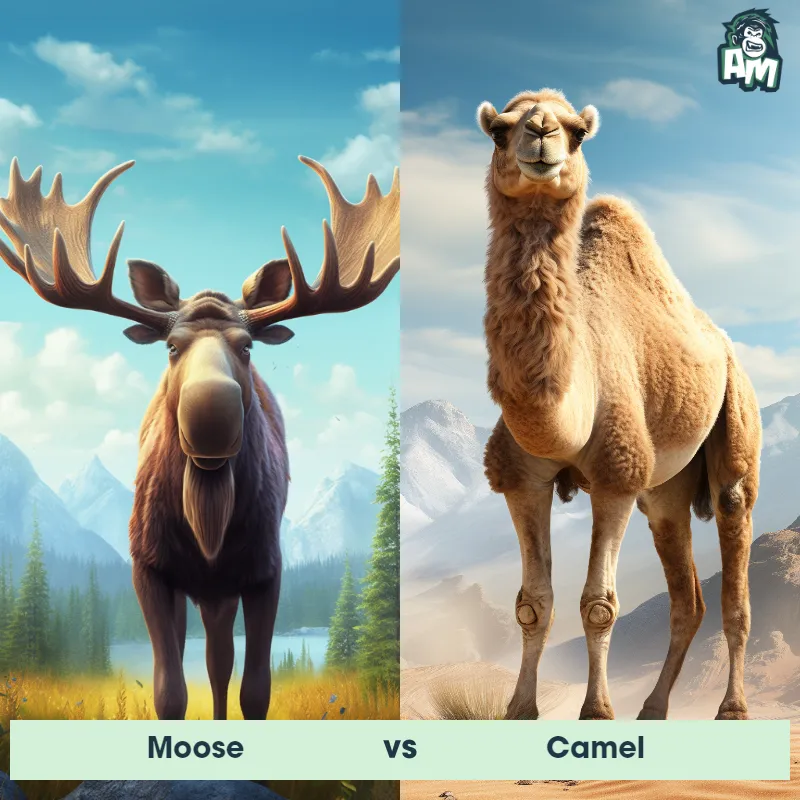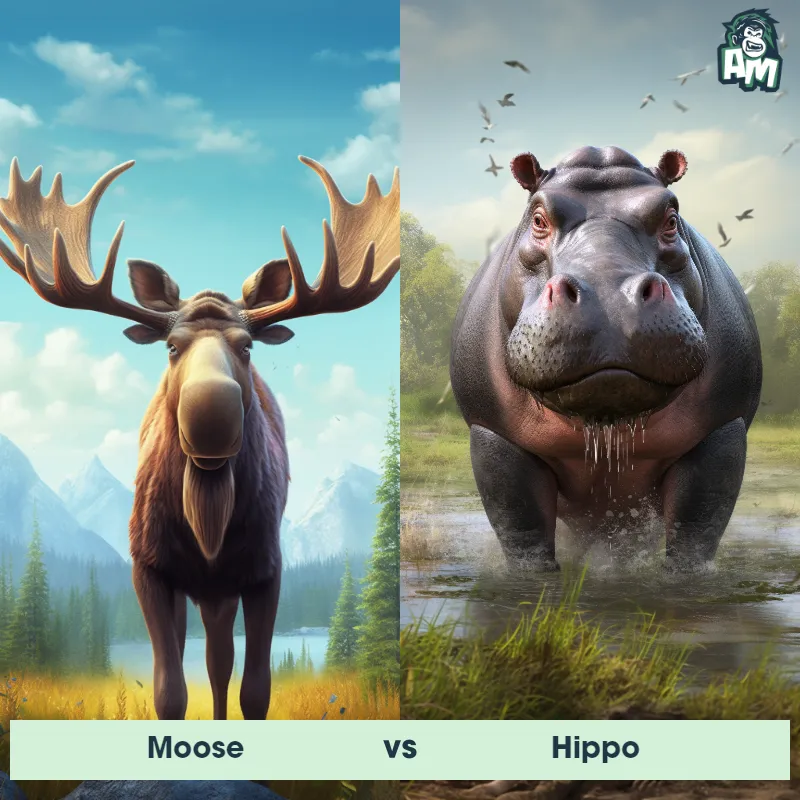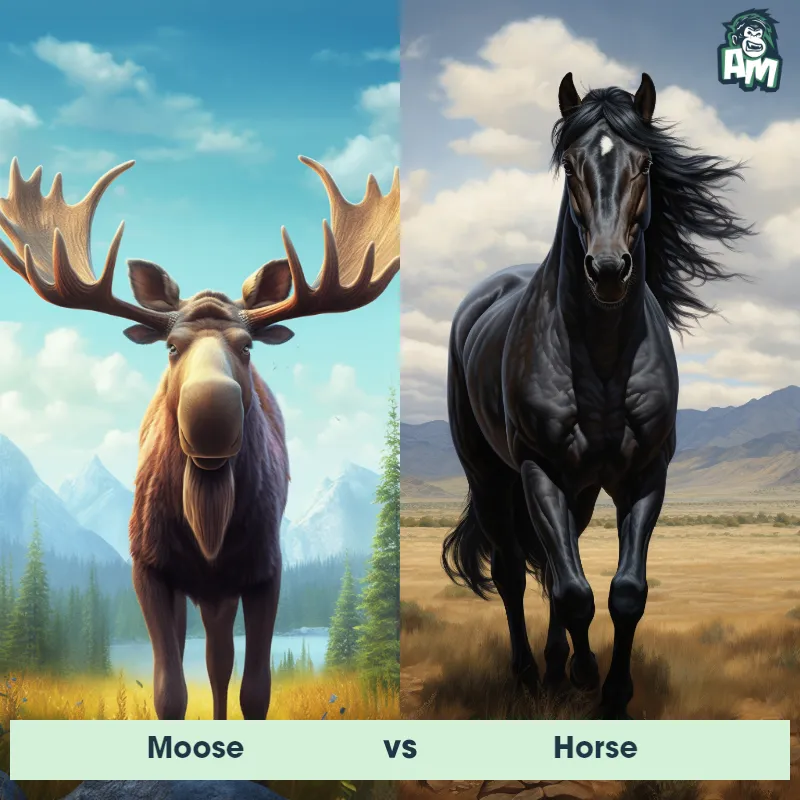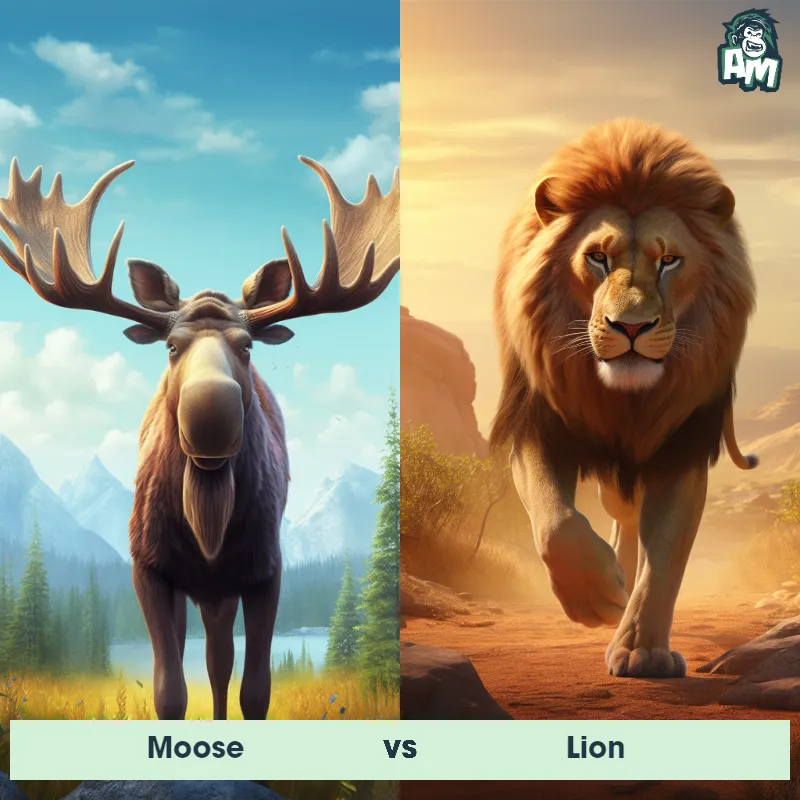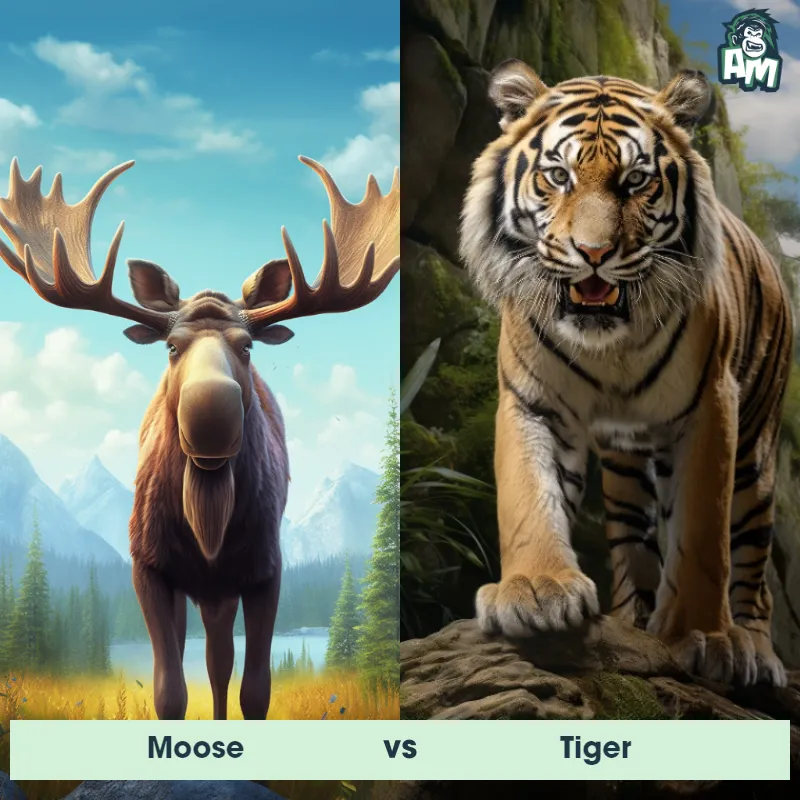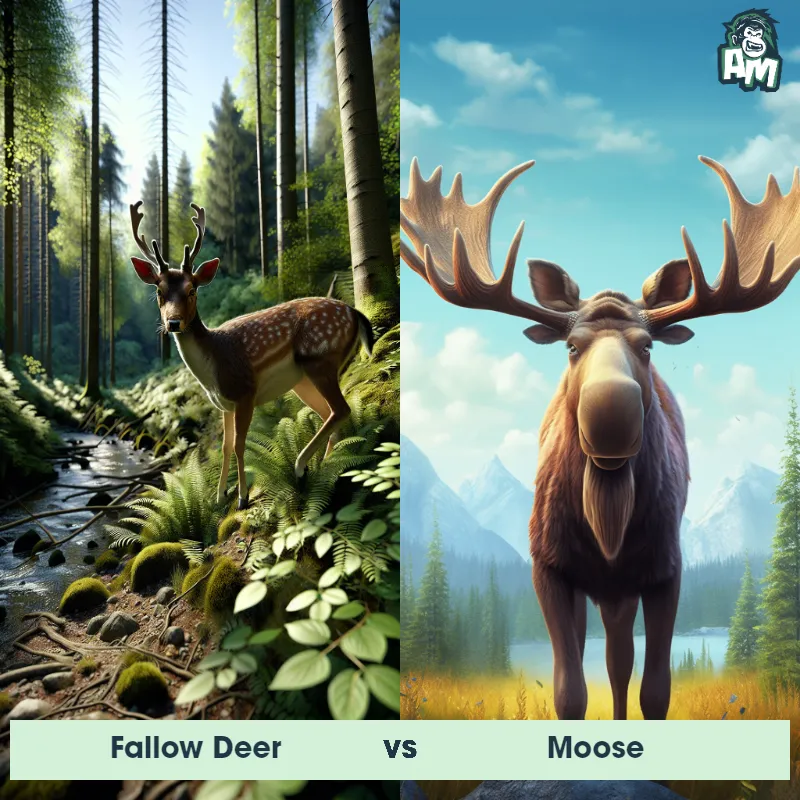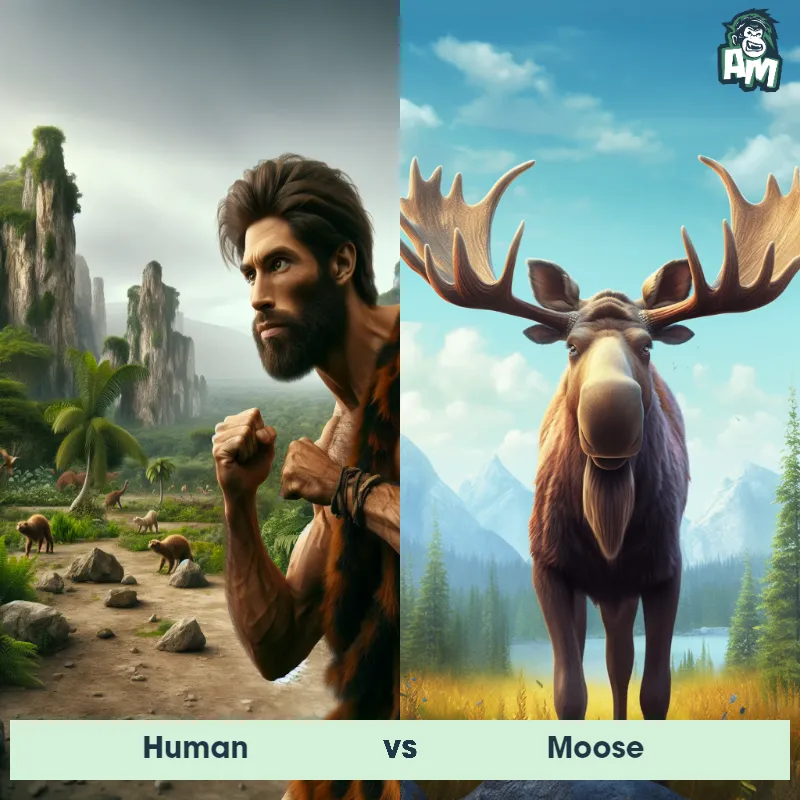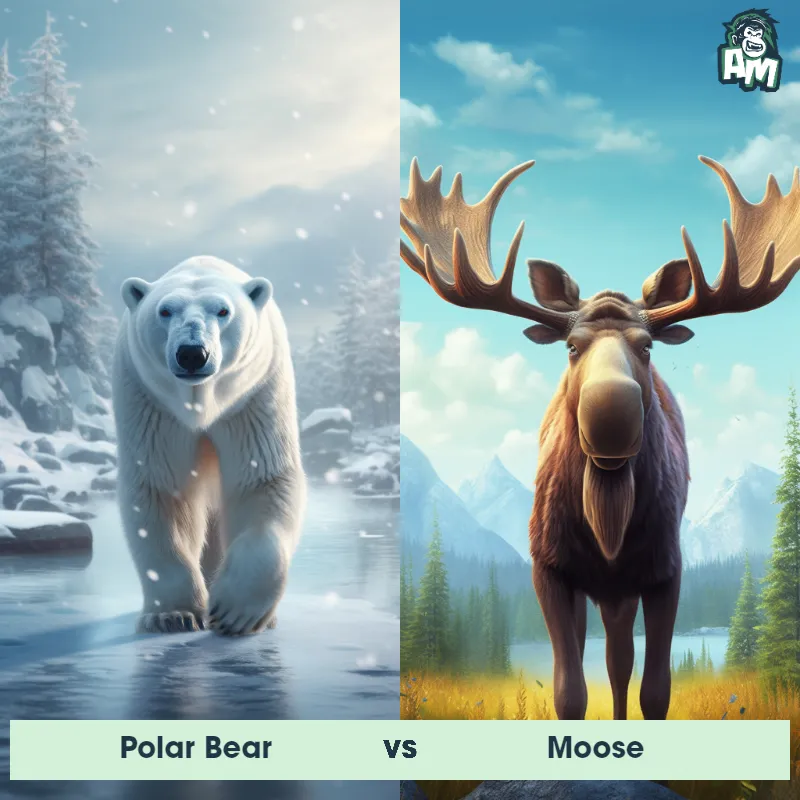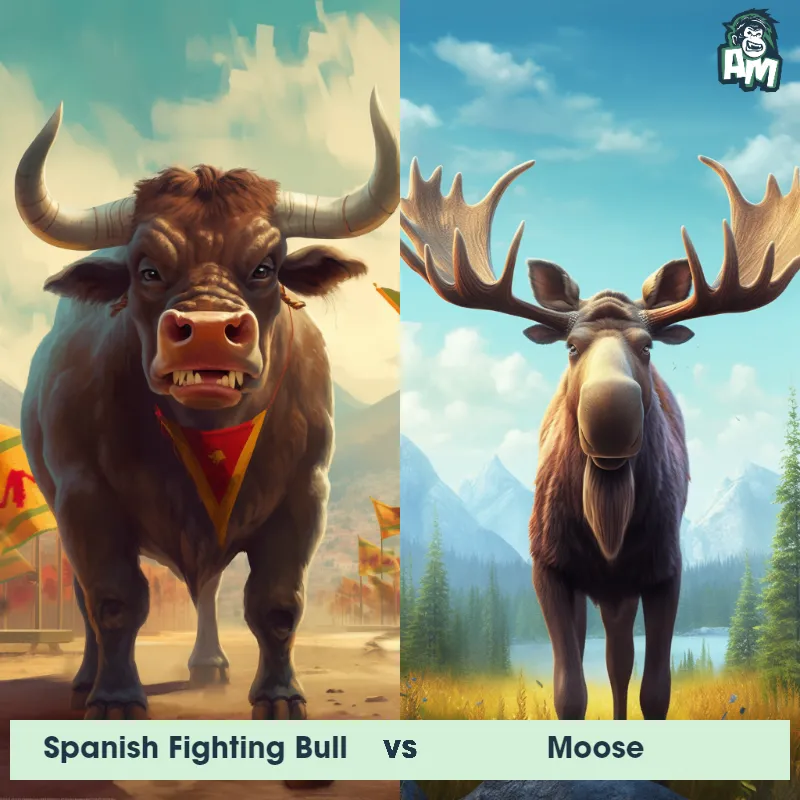The Moose
The moose, also known as the Eurasian elk, is the largest extant member of the deer family. With a height ranging from 5 to 7 feet at the shoulder, a weight of up to 1,600 pounds, and antlers spanning up to 6 feet in width, the moose is an impressively large and powerful animal. It is characterized by its long, muscular body, short tail, and a prominent snout with a protruding upper lip. The fur of a moose is typically dark brown, although variations in color can occur. Moose are known for their excellent swimming abilities, which enables them to traverse rivers and lakes with ease.
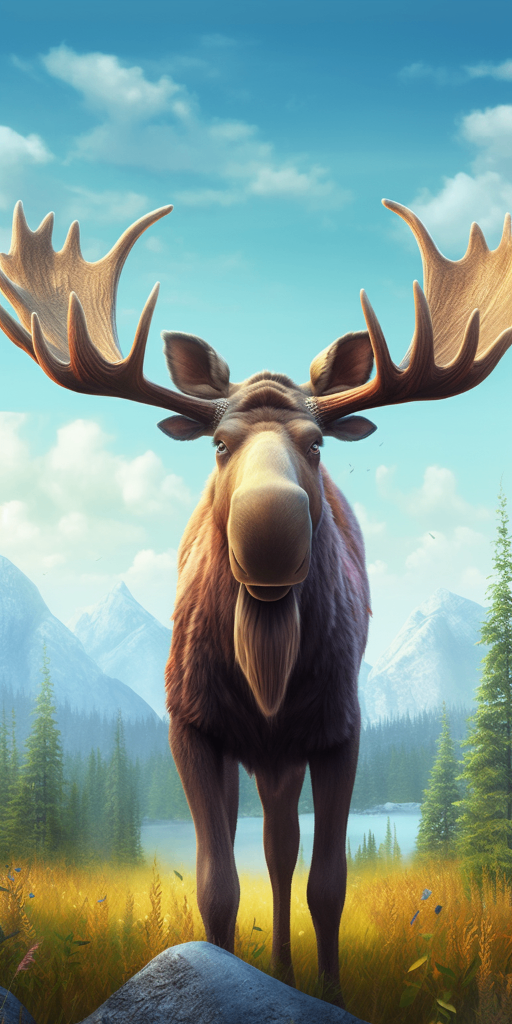
| Moose | |
|---|---|
| Size | Up to 6 feet (1.8 meters) at the shoulder |
| Weight | Up to 1500 pounds (680 kilograms) |
| Speed | Speed: 35 mph (56.3 km/hr) |
| Key Strength | Powerful antlers used for fighting and display |
| Biggest Weakness | Poor eyesight and slow movement |
| Scientific Name | Alces alces |
| Family | Cervidae |
| Habitat | Forests, wetlands, and tundra |
| Geography | North America, Europe, and Asia |
| Diet | Herbivorous, primarily consuming leaves, bark, and twigs |
| Lifespan | 15 years - 20 years |

The Moose
The moose, also known as the Eurasian elk, is the largest extant member of the deer family. With a height ranging from 5 to 7 feet at the shoulder, a weight of up to 1,600 pounds, and antlers spanning up to 6 feet in width, the moose is an impressively large and powerful animal. It is characterized by its long, muscular body, short tail, and a prominent snout with a protruding upper lip. The fur of a moose is typically dark brown, although variations in color can occur. Moose are known for their excellent swimming abilities, which enables them to traverse rivers and lakes with ease.
Fun Fact: Moose are excellent divers and can hold their breath underwater for up to 30 seconds, allowing them to access underwater plants and vegetation that other animals cannot reach.
| Moose | |
|---|---|
| Size | Up to 6 feet (1.8 meters) at the shoulder |
| Weight | Up to 1500 pounds (680 kilograms) |
| Speed | Speed: 35 mph (56.3 km/hr) |
| Key Strength | Powerful antlers used for fighting and display |
| Biggest Weakness | Poor eyesight and slow movement |
| Scientific Name | Alces alces |
| Family | Cervidae |
| Habitat | Forests, wetlands, and tundra |
| Geography | North America, Europe, and Asia |
| Diet | Herbivorous, primarily consuming leaves, bark, and twigs |
| Lifespan | 15 years - 20 years |
Match Highlights
Moose Matchups
We use AI to simulate matchups between the Moose and other animals. Our simulation considers size, strength, and natural predatory behaviors to determine the most likely outcome.
Moose: Diet, Predators, Aggression, and Defensive Behaviors
What do Moose eat?
Moose are herbivores, primarily feeding on vegetation such as leaves, twigs, bark, and aquatic plants. In the summer, they prefer aquatic plants like water lilies, while in the winter, they rely on pine and fir needles as well as woody plants.
Do Moose have any predators?
Yes, Moose have several predators including bears, wolves, and cougars. Calves are especially vulnerable to predation, while adult Moose can defend themselves to some extent with their large size and powerful kicks.
Are Moose aggressive?
Moose are generally not aggressive animals, but they can become aggressive if they feel threatened or are provoked. During the mating season, male Moose can display aggression towards each other to establish dominance and secure mating rights.
Do Moose fight?
Male Moose, known as bulls, engage in aggressive fights during the mating season to establish dominance and attract females. These fights involve charging at each other with their antlers and can result in serious injuries.
How do Moose defend themselves?
Moose defend themselves primarily by using their size, strength, and powerful kicks. They can also swim well and may use water as a means of escape from predators. Additionally, their antlers can be used as weapons if necessary.
What is the Moose's biggest weakness in a fight?
Despite their size and strength, Moose are vulnerable in a fight due to their relatively slow movement and limited agility. This can make them susceptible to agile predators such as wolves, who may use teamwork and speed to overcome a Moose in a confrontation.
Fun Fact: Despite their imposing size, moose are surprisingly agile and can run at speeds of up to 35 mph 56 km/h, which makes them capable of outrunning most predators, including wolves.
Fun Fact: Moose have a highly developed sense of smell, with their nostrils being able to detect scents from up to 1 mile away, making them experts at locating food sources and avoiding danger.



